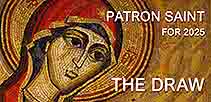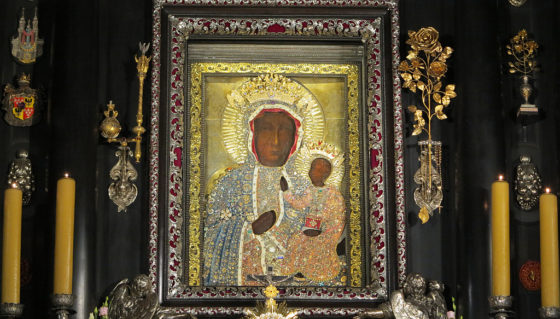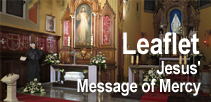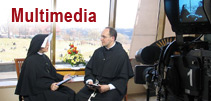It must be admitted that Sacred Scripture contains no direct references to Mary as Mother of Mercy, Our Lady of Mercy, Mother of Divine Mercy, or the merciful Mother. There are, however, Biblical texts that perfectly describe these titles and the reality hidden behind them. A similar situation occurs with regard to Jesus as Incarnated Mercy. There is no such expression in the Bible; yet, there are plenty of passages which clearly speak of the incarnation of the second Person of the Trinity (John 1:14, Philippians 2:6n) and emphasize His mercy (healings, e.g. Mt 9:27n, resurrections, e.g. a boy of Nain, Luke 7:13n, or the Redemption of man). Therefore, calling Jesus the Incarnate Mercy is fully justified, since this term, used by Saint Faustina, contains the essence of the life and mission of Jesus. This involved the adoption of the human body, so that He could reveal to the world the life, word and deeds of the Father, Who is rich in mercy. Jesus is indeed “mercy itself”. He referred to himself directly in this way in the visions of Saint Faustina. He repeatedly said “I am Love and Mercy itself” (Diary 1074, 1273, 1486, 1739, 1775, 1780) and thus Sister Faustina spoke about him in this way (Diary 383, 950, 1264, 1552, 1574, 1751).
The same sort of situation occurs in the case of the titles of Mary as Mother of Mercy, Our Lady of Mercy or Mother of Divine Mercy, etc. Each of these titles reveals a specific reality associated with the life of Mary and her unusual mission as the Jesus’ Mother, who actively participates in the Redemption. In considering the mystery of mercy in relation to her, one has to take into account two fundamental dimensions. Firstly, Mary as Mother of Mercy Incarnate, endowed by God with the fullness of grace (Immaculate), who gave birth to the Son of God in human flesh (Bethlehem), and who participated in the manifestation of God’s mercy to the world until the fiat of Golgotha. Secondly, Mary as the merciful Mother of mankind, who performed mercy through acts of which the first and greatest is giving the Son of God to the world (the visit to Elizabeth), through words (the Magnificat), and through prayer (the wedding in Cana, or the prayer with the apostles in the Cenacle).
















